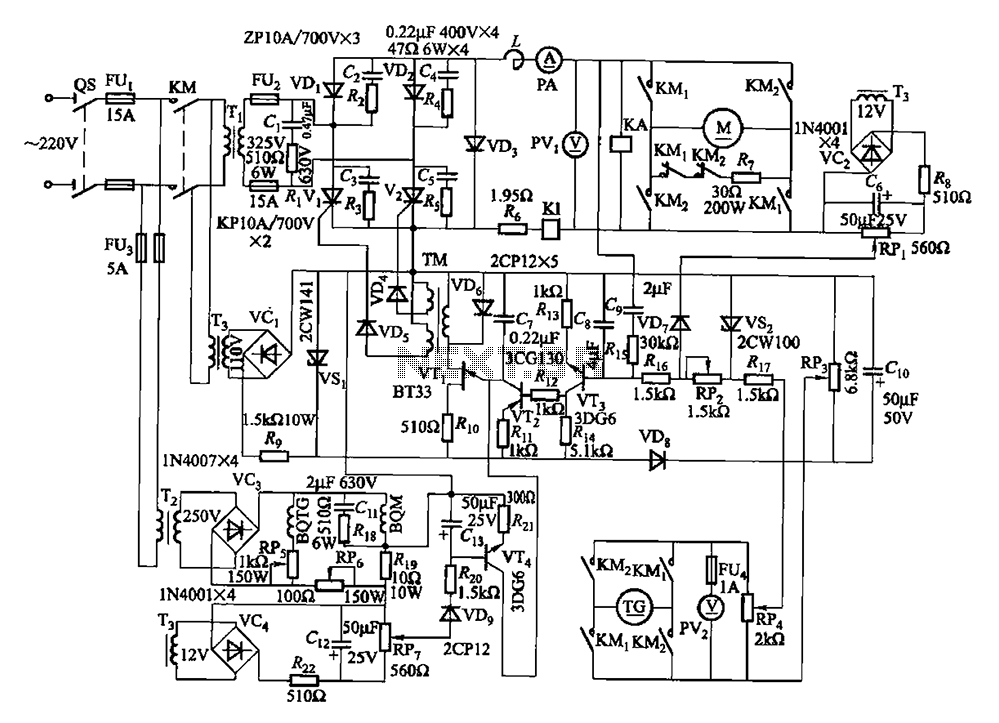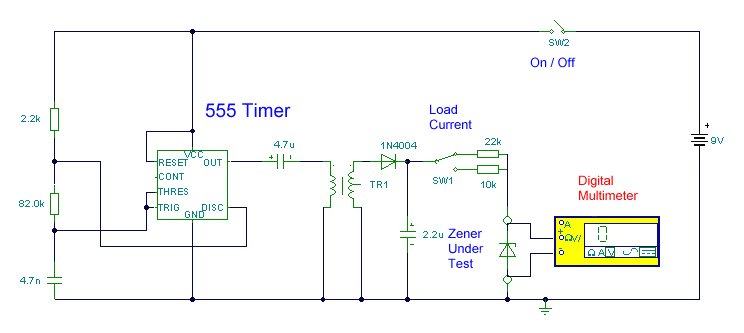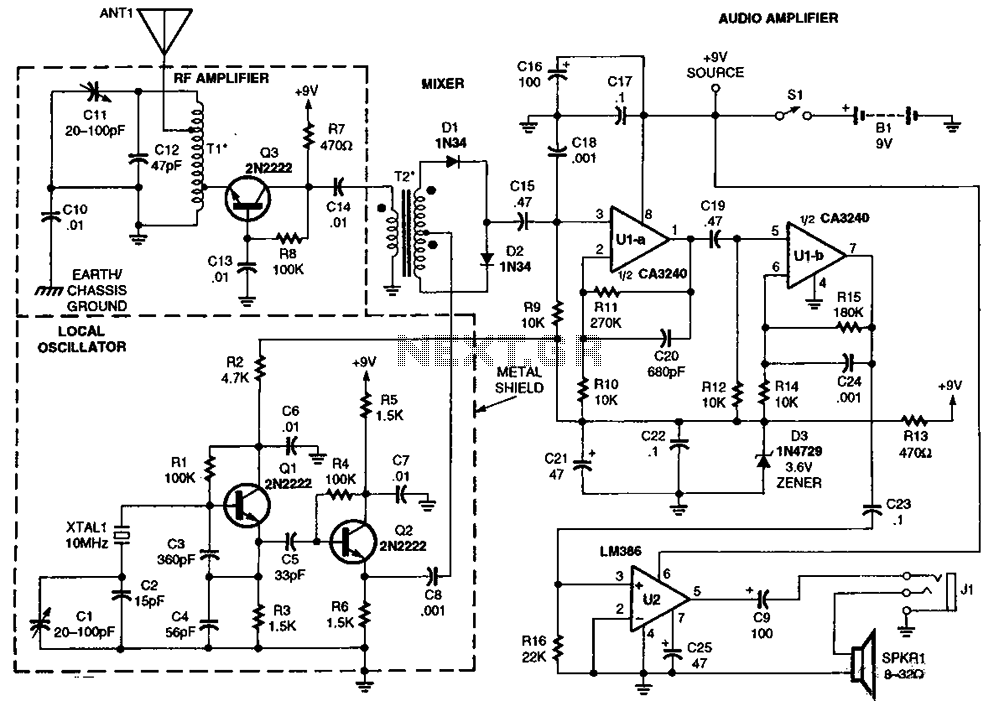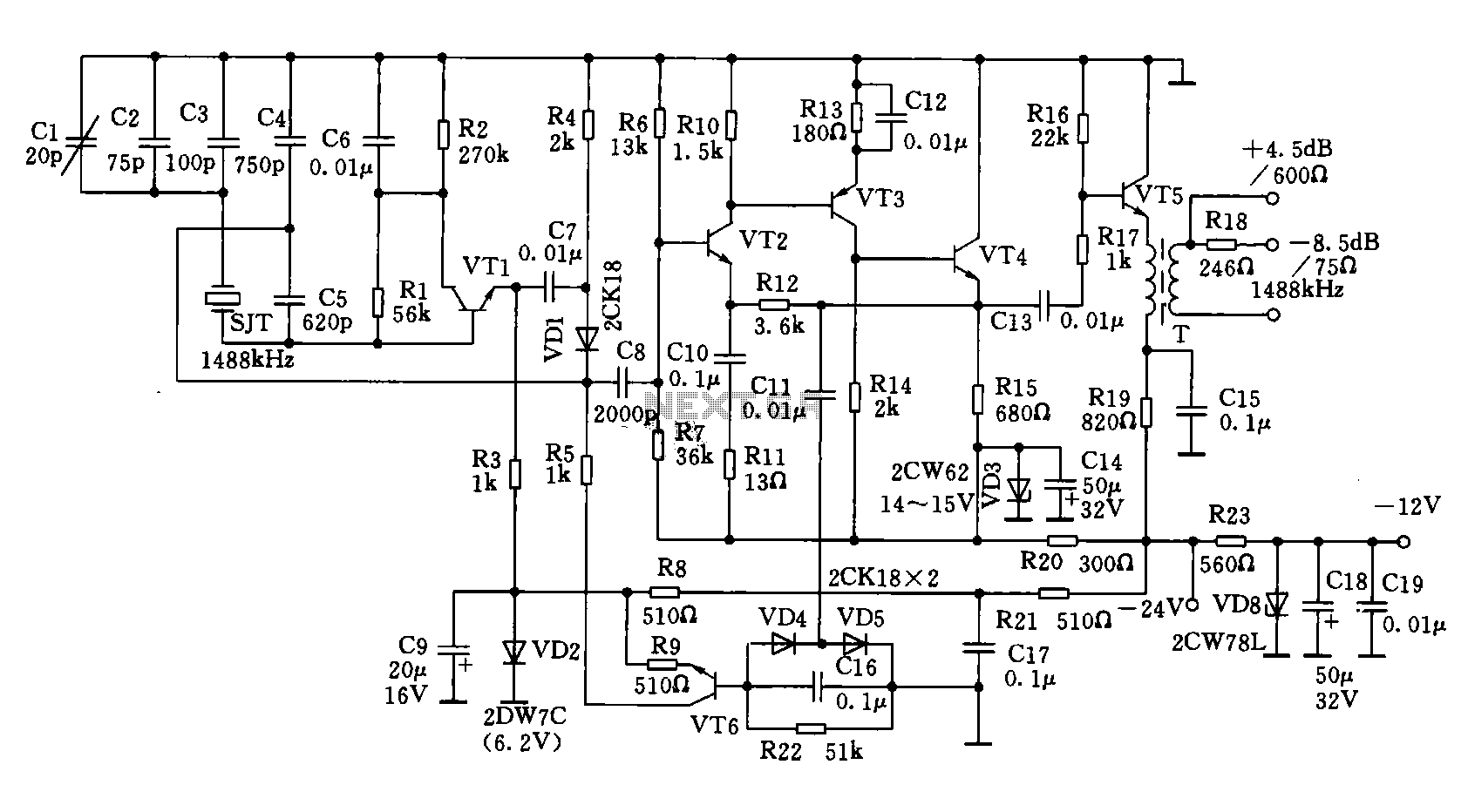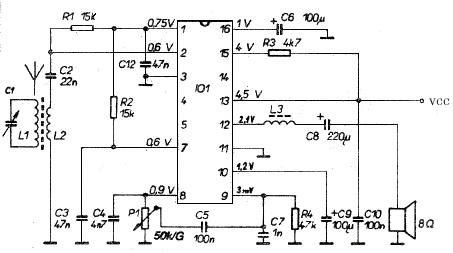
High-performance quadrature sine wave type oscillator circuit
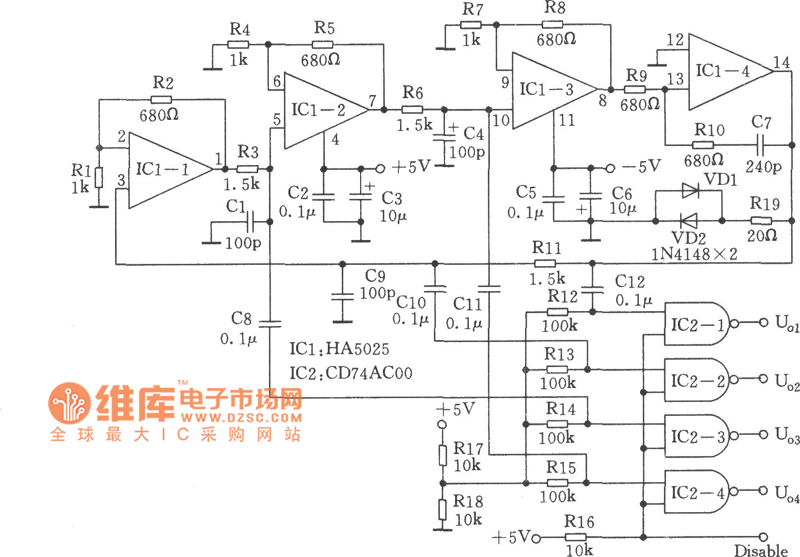
Many RC oscillators utilize advanced circuits within the phase shift unit. These circuits employ voltage feedback amplifiers, whose gain decreases significantly at high frequencies and ceases when high frequency is not attained. The variation in the phase characteristics of the voltage feedback amplifier contributes to this behavior. The IC HA5025, which features four current feedback amplifiers, is employed to construct the RC oscillator, resulting in the generation of four quadrature sine waves.
The RC oscillator circuit described employs the HA5025 integrated circuit, which is notable for its four current feedback amplifiers. This design allows for the generation of four quadrature sine waves, which are essential in various applications, including signal processing and modulation schemes.
In this configuration, the phase shift unit is critical, as it determines the frequency stability and output waveform quality of the oscillator. The use of voltage feedback amplifiers allows for the amplification of the signal while maintaining a specific phase relationship, which is vital for oscillator operation. However, it is important to note that the gain of these amplifiers is frequency dependent. As the frequency increases, the gain diminishes, ultimately leading to a point where the amplifier cannot sustain oscillation if the frequency is not sufficiently high. This characteristic is attributed to the inherent phase shifts within the amplifier's feedback loop.
The quadrature outputs produced by the HA5025 can be utilized in various applications, including phase-locked loops (PLLs) and signal generation for communication systems. The four sine wave outputs are 90 degrees out of phase with one another, which is advantageous for applications that require precise timing and synchronization of signals.
In summary, the RC oscillator utilizing the HA5025 is an effective solution for generating stable and precise quadrature sine waves, with the design considerations of phase characteristics and frequency response being pivotal to its functionality.Many RC oscillators use the advanced circuits in the phase shift unit. They use the voltage feedback amplifier, and the gain of the voltage feedback amplifier will reduce sharply in the high frequency, and gain will stop, when it has not reached the high frequency. The difference of the voltage feedback amplifier phase characteristic is the reason. The high frequency IC HA5025, which contains four current feedback amplifiers, is used to make the RC oscillator, thus four quadrature sine waves will be formed, as shown in the picture. 🔗 External reference
The RC oscillator circuit described employs the HA5025 integrated circuit, which is notable for its four current feedback amplifiers. This design allows for the generation of four quadrature sine waves, which are essential in various applications, including signal processing and modulation schemes.
In this configuration, the phase shift unit is critical, as it determines the frequency stability and output waveform quality of the oscillator. The use of voltage feedback amplifiers allows for the amplification of the signal while maintaining a specific phase relationship, which is vital for oscillator operation. However, it is important to note that the gain of these amplifiers is frequency dependent. As the frequency increases, the gain diminishes, ultimately leading to a point where the amplifier cannot sustain oscillation if the frequency is not sufficiently high. This characteristic is attributed to the inherent phase shifts within the amplifier's feedback loop.
The quadrature outputs produced by the HA5025 can be utilized in various applications, including phase-locked loops (PLLs) and signal generation for communication systems. The four sine wave outputs are 90 degrees out of phase with one another, which is advantageous for applications that require precise timing and synchronization of signals.
In summary, the RC oscillator utilizing the HA5025 is an effective solution for generating stable and precise quadrature sine waves, with the design considerations of phase characteristics and frequency response being pivotal to its functionality.Many RC oscillators use the advanced circuits in the phase shift unit. They use the voltage feedback amplifier, and the gain of the voltage feedback amplifier will reduce sharply in the high frequency, and gain will stop, when it has not reached the high frequency. The difference of the voltage feedback amplifier phase characteristic is the reason. The high frequency IC HA5025, which contains four current feedback amplifiers, is used to make the RC oscillator, thus four quadrature sine waves will be formed, as shown in the picture. 🔗 External reference
